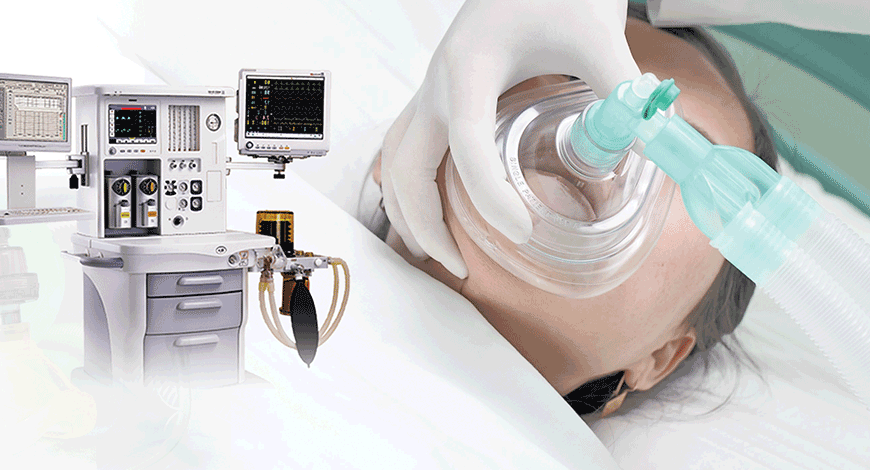Anesthesia Equipment
Good Progress But Challenges Remain

Good Progress But Challenges Remain The future of anesthesia care will be largely influenced by personalized medicine and AI-supported technologies.
Advances during the last several decades have led to important improvements in clinical monitoring technology and clinical practice development, not only in patients undergoing surgery or in patients being cared for in intensive care units but also in ambulatory patients. These developments have contributed to great improvements in patient safety. In addition, anesthesiologists worldwide have developed standards for continuous real-time monitoring of hemodynamics, oxygenation, ventilation, neurological status, urine output, core temperature, the degree of neuromuscular blockade, as well as other items, all of which have also contributed significantly to patient safety.
Technology trends
AI and virtual care. AI-supported solutions play a pivotal role in supporting successful surgical solution shop models. By incorporating automation and data analytics into individualized care, elements like advanced early warning systems, wireless surveillance technology that uses algorithms to recognize potential symptoms and diseases, will allow clinicians to better utilize technology to recognize patient deterioration and activate interventions. AI will also support nurse avatars that will reach patients in their homes via telemedicine. Patients will be able to interact with these avatars, and the avatars will lead patients through exercises and repetitive tasks to ensure optimal preoperative and postoperative care.
In addition to the nurse avatars, AI can also facilitate clinical guidance that better tracks real-time data to optimize anesthesia care. Such automation requires rule-based, closed-loop feedback systems to manage or maintain general anesthesia within patient-specific goals of care such as goal-directed fluid therapy or low-pressure ventilation. Efforts to develop these types of systems are in their infancy, but experts still believe systems like these are the next generation of technology improving patient safety and quality.
Researchers argue that while AI will influence how anesthesia is practiced, the complexity of the specialty will limit it from ever achieving full-automation. These researchers feel the best utilization of AI in anesthesia will be to support elements of perioperative home care and clinical decision support. Since AI can interpret hard data elements but can never replace the tactile feel of a patient’s response to therapy and clinical judgement calls that occur minute to minute within the operating room. AI may be able to interpret the patient’s vital signs but will not appreciate the nuances of the surgical care playing out in the surgical field that impact those vital signs. AI-supported tools like nurse avatars allow clinicians to reach patients outside of the hospital. Advances in AI-based diagnostic technologies can also flag patients and alert clinicians to conditions before appointments. Such advancements support the solution shop model by extending and sharpening a clinician’s expertise and ability to generate better outcomes.
The solution shop model and the evolution of anesthesiology. Solution shop business models are based on three key components: a team structure, a work method, and a profit formula. The models are prevalent across multiple industries, as they are customizable and effective in solving unstructured problems. Consulting firms, advertising agencies and research and development organizations all employ solution shop business models. The emergence of the solution shop model is an example of healthcare’s continued evolution. A concept created in the business space is being co-opted into healthcare to continue improvements in patient-centered care. This is not the first-time healthcare providers have looked to outside industries to improve processes. Surgical checklists, safety protocols, and Lean Six Sigma were all adopted from other industries and have made deep impressions in healthcare.
Augmented reality is changing the way medicine is taught, and how surgical procedures are explained to the patients. With the passage of time, experts are expecting to see a continuation of exponential progress in AI ability to perform more tasks with improving proficiency.
Development of robots with fine motor capabilities has made possible the operative techniques, and precision surgery with minimal access, which was previously considered very difficult. In addition to surgery, those are being trialed for other interventional and anesthetic procedures, such as endotracheal intubation, intravenous and central venous cannulation, nerve blocks, resuscitation, and automated drug delivery systems, etc.
Internet of thing is bringing the patient–healthcare provider interaction to a whole new level. It is now possible to have a completely patient-centered service provision. The patients would be continuously monitored from the comfort of their home, or even on the move, connected to the healthcare providers through, for example, their smartphone, or their smart car. Their compliance with the prescribed level of exercise, food, and medicine intake can all be monitored with appropriate prompts and suggestions issued automatically as needed. If their medicine cupboard is running low on supply, replacement could automatically be requested from their doctor/pharmacy. If they develop a condition, such as a dysrhythmia, first aid including automated electronic defibrillator could be dispatched to their location, ambulance service notified, and the hospital bed prepared for them, all by their smartphone.
Way forward
The above successes notwithstanding, many vital challenges remain to be addressed by the anesthesia technology community. One of these challenges includes reducing the time interval needed to troubleshoot a malfunctioning electrocardiogram, capnograph, pulse oximeter or some other patient monitor prior to starting an anesthesia case. Another challenge is in the realm of alarms; who has not been irritated when the source of a monitor alarm is completely unapparent or when an asystole alarm occurs despite both a good arterial blood pressure waveform and a high-quality pulse oximeter tracing being present. Such difficulties divert attention from direct patient monitoring as a mental effort is expended to address some technical problem. Problems related to poor software design or careless user interface designs have also led to patient harm.
Moving forward, the future of anesthesia care will be largely influenced by personalized medicine and AI-supported technologies. By incorporating these advancements into a solution shop model, practices will be able to standardize processes, improve patient flow, improve clinical outcomes, and decrease waste and error.












